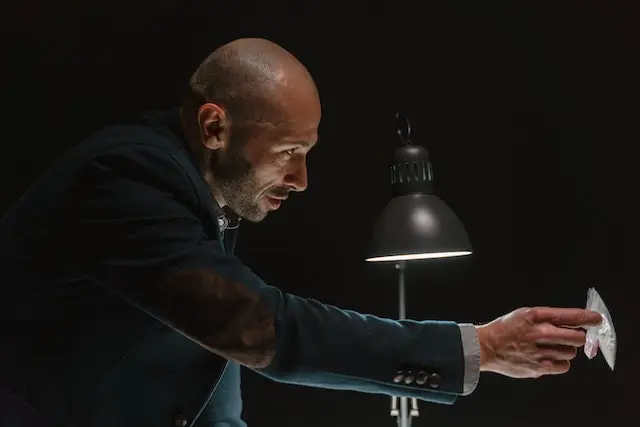A Comprehensive Guide to Creating Your Mystery Character Bible

Imagine this: you’re crafting a suspense-filled mystery novel. The setting is perfect, the plot is full of twists and turns, and your readers are on the edge of their seats. But something seems to be missing. Your characters lack depth, and your readers struggle to connect with them. The solution? A Character Bible.
A Character Bible is a comprehensive document you create for your characters. It’s a treasure trove of information, rich in detail, that defines your characters, where they come from, and where they’re going. Think of it as a blueprint for your characters’ identities, mapping out their personalities, backgrounds, relationships, and development arcs.
As a mystery writer, you might wonder: why is a Character Bible so crucial? In a genre where the plot often takes center stage, you may overlook character development. But remember, your characters drive the plot, breathe life into your story, and keep your readers coming back for more. A well-developed Character Bible helps you create multidimensional, complex characters who intrigue your readers and keep them guessing until the very last page.
Creating a Character Bible might seem like a daunting task. But it’s an exciting process that sparks your creativity and brings your characters to life in ways you never imagined. It allows you to dive deep into your characters’ worlds, to explore their minds and their motives, and to fully understand their actions and reactions.
The Anatomy of a Character Bible
It’s essential to understand the key elements that make up this indispensable tool. Just as an artist uses a variety of colors to paint a masterpiece, a mystery writer employs different aspects of a character’s life to craft an engaging narrative. Four key elements stand out: Basic Character Information, Character Backstory, Character Relationships, and Character Development and Arc, and let’s not forget the critical role of Story Context.
Basic Character Information. This is your character’s bedrock, the foundation upon which you build everything else. It includes their name, age, appearance, occupation, and any other details that give your readers a concrete sense of who your character is. It’s like the first brushstroke on a canvas, setting the tone for the masterpiece to come.
Character Backstory. This is where you explore your character’s past – their joys, sorrows, triumphs, and failures. Backstory provides the rationale for your character’s current behavior and motivations. It’s the backstory that shapes your characters, makes them who they are, and adds depth to their personality.
Character Relationships. Every character exists in a web of relationships that influence their actions and decisions. Exploring these relationships helps you understand your characters better and creates layers of complexity in your story. Think about your characters’ friends, family, enemies, and lovers – how do these relationships impact their journey?
Story Context. This refers to how your character fits in the story – their story role. Knowing a character’s story context allows you to understand their role in moving the story forward. Do they help or hinder your detective? Do several characters have the same story role?
With a clear understanding of your characters’ information, backstory, and relationships, you are able to outline their Character Development and Arc. This is about how your characters change over time, how they grow and evolve in response to the story’s events. It’s about taking your characters on a journey from who they were at the beginning of the story to who they become at the end.
Each element plays a crucial role in creating compelling, complex characters. When they come together in your Character Bible, they form a complete, vivid portrait of your characters – a portrait that not only guides your writing process but also captivates your readers’ imagination.
Developing Your Protagonist
The protagonist is the star of your mystery novel, the character your readers will follow, root for, and connect with. They’re the ones who will face obstacles, solve puzzles, and uncover the truth. So developing a well-rounded, relatable protagonist is one of the most crucial steps in creating your Character Bible.
The first step is understanding who your protagonist is at their core. Their basic information—name, age, occupation, and appearance—sets the stage, but it’s their personality traits, habits, quirks, and values that define them. Picture your protagonist in your mind.. What makes them unique? What are their strengths and weaknesses? What drives them, and what holds them back?
Every protagonist carries a past that influences their present. Perhaps they’ve had a traumatic experience that’s led them to become a private investigator. Maybe they’re looking for redemption, or they’re driven by a deep sense of justice. This backstory is not just about filling in their history, but about understanding what makes them tick.
Next, think about the skills your protagonist possesses. Are they a master of disguise? Do they have an uncanny ability to read people? Remember, their skills will play a crucial role in how they navigate the twists and turns of your mystery plot.
However, a compelling protagonist is not without flaws. Maybe they’re stubborn, or too trusting, or haunted by self-doubt. These flaws make your protagonist human and relatable, and they create interesting obstacles in their path.
Finally, consider their motivations. What propels them into the mystery? What is at stake for them? The greater their motivation, the more your readers will root for them.
Building your protagonist is like getting to know a new friend. It’s an exciting journey of discovery where you peel back the layers to reveal the heart of your character. And with each detail you uncover, your protagonist becomes more real, complex, and captivating.
Creating Engaging Supporting Characters
Just as a beautiful painting isn’t composed of a single color, a gripping mystery isn’t made up of a lone character. Supporting characters are the vibrant hues that fill your story’s canvas, adding depth and complexity to your narrative. They may be allies or obstacles, confidantes or competitors, but they are essential in making your mystery world more engaging and believable.
As a mystery writer, you have an array of supporting characters at your disposal. From the loyal sidekick, the wise mentor, the suspicious stranger, to the red-herring character designed to throw your protagonist and readers off track, each character brings something unique to your story.
Just like your protagonist, your supporting characters need to be fleshed out. Start with their basic information, but don’t stop there. Dig deeper into their personalities, their histories, and their motivations. Each supporting character, no matter how minor their role might seem, has a story.
Consider their relationships with your protagonist. A steadfast friend or a bitter rival reveals new facets of your protagonist’s personality, pushing them to grow and evolve. These relationships also contribute to the tension and suspense that are crucial in a mystery novel.
Remember to infuse diversity into your supporting characters. Different backgrounds, perspectives, and voices make your story richer and more realistic. These differences spark intriguing conflicts, create unexpected alliances, and engross your readers.
Also, pay attention to the role they play in the plot. Do they provide vital clues? Do they add to the protagonist’s challenges? Make sure each character serves a purpose in driving your story forward.
Creating engaging supporting characters might seem like a lot of work, but it’s an investment that pays off. Each character you create enhances your mystery world, making it more dynamic and captivating.
Crafting the Perfect Antagonist
Every great mystery needs a compelling antagonist. This character serves as the counterpoint to your protagonist, the shadowy figure who sets the stage for conflict, tension, and suspense. They are the puzzle your protagonist must solve, the force that propels your story forward. But crafting the perfect antagonist goes beyond just creating a ‘bad guy’; it’s about creating a character as complex and multi-dimensional as your protagonist.
Begin with the basics. Who is your antagonist? What do they look like, and what role do they play in your story’s world? This information sets the stage, giving your readers a first impression of the character they’ll love to hate.
Next, delve into their backstory. What shaped them into the person they are in your story? What are their motivations? Understanding their past helps you make their actions and decisions in the present more believable and compelling.
Remember, an intriguing antagonist isn’t pure evil. They have their strengths and weaknesses, their hopes and fears. They might even have noble goals, but their methods are flawed. This complexity makes them relatable and keeps your readers guessing.
Consider the relationship between your antagonist and your protagonist. This relationship is the heartbeat of your mystery, driving the conflict and shaping the journey of both characters. Whether they’re arch-enemies, former friends, or strangers whose paths cross, this relationship should be dynamic and evolving, adding layers of tension and intrigue to your story.
Think about your antagonist’s role in the plot. They should work against your protagonist, creating obstacles and challenges. But they should also catalyze your protagonist’s growth, pushing them to confront their fears, overcome their flaws, and become a better version of themselves.
Crafting the perfect antagonist is a delicate balancing act. But your work and insights transform your mystery from a simple puzzle into a thrilling exploration of character and conflict.
The Mystery Victim – More Than Just a Plot Device
In the heart of every mystery lies the question: “Whodunit?” And central to that question is the victim. While it’s easy to overlook the victim as a mere plot device, a true mystery aficionado knows the victim is – and should be – so much more. They are a pivotal character, one that influences the story, deepens the intrigue, and propels the narrative forward, all while not being present.
First, let’s start with the basics. Who was the victim? What were they like? The victim’s personality, background, and relationships not only add substance to their character but also provide potential clues and red herrings.
The victim’s occupation, hobbies, or secret activities lead to a wealth of suspects and motives, thus driving the mystery. Were they a beloved community figure, a feared tycoon, or a mysterious stranger? Did they have a secret life that few people knew about?
The victim’s relationships are a treasure trove of potential leads and suspects. From jealous lovers to estranged family members, from betrayed friends to threatened rivals, each relationship adds a layer of complexity and suspense to your mystery.
Just like any other character, the victim also had strengths and flaws. Were they known for their philanthropic deeds, or were they infamous for their ruthless ambition? By painting a nuanced picture of the victim, you create more room for speculation and surprise, keeping your readers engaged.
The victim’s death itself is a crucial aspect of their character. The circumstances of their death, the method, the location—all these details contribute to the intrigue and give your detective, and your readers, something to puzzle over.
Creating a compelling victim character elevates your mystery from a simple “whodunit” to a complex, gripping narrative. Even though the victim might not be present in your story, their influence permeates every page, every clue, every twist and turn. So, let’s give your victim the attention they deserve and, in doing so, give your mystery added depth and intrigue.
The Evolution of Character Development and Arcs
Character development and arcs are the essence of storytelling. They are the transformational journeys your characters undergo, adding depth and dynamism to your narrative. These arcs are riveting in mystery novels, where characters are constantly pushed to their limits, forced to confront their fears, and evolve unexpectedly.
Think of your protagonist’s arc. At the beginning of your story, they might be a novice detective, a disillusioned cop, or a curious amateur—but by the end, they may change. This change could be—become more confident, more empathetic, more courageous. Or it could be negative—they become disillusioned, hardened, or isolated. The key is that they are not the person they were when the story began.
Supporting characters should also have development arcs. Perhaps the loyal sidekick becomes more assertive, the suspicious stranger redeems themselves, or the seemingly innocent character reveals a darker side. These arcs add complexity to your story and keep your readers engaged.
The antagonist, too, has a compelling arc. Perhaps they realize the error of their ways, or they descend further into their delusions.
Creating these arcs involves understanding your characters’ motivations, fears, and desires. It’s about setting up challenges that push them out of their comfort zones, and showing how they react, adapt, and evolve. It’s about showing their victories and defeats, their moments of doubt and moments of revelation.
As you chart your characters’ development arcs in your Character Bible, you do more than just plan your narrative. You’re breathing life into your characters, transforming them from mere words on a page to living, evolving beings. And in the process, you’re crafting a mystery that is not just about ‘whodunit’, but also about ‘who are they’ and ‘who do they become’.
Your Journey to Becoming a Master Mystery Writer
Creating a Character Bible is an exciting and enlightening journey. As you delve into your characters’ personalities, histories, relationships, and arcs, you’re not just building the foundation of your mystery novel – you’re stepping into a thrilling world of intrigue, suspense, and human drama. You’re transforming from a writer into a master puppeteer, a creator of lives, a weaver of mysteries.
But remember, crafting a compelling mystery is about more than just creating fascinating characters. It’s about weaving a complex plot, maintaining suspense, planting clues and red herrings, and delivering a satisfying resolution. It’s about honing your narrative skills, nurturing your creative voice, and understanding the mechanics of the mystery genre.
This might sound like a tall order, but don’t worry. You’re not alone on this journey. The Write A Killer Mystery course is here to guide you every step of the way.
This course will equip you with the tools, techniques, and insights you need to craft a riveting mystery. You’ll learn from experienced mystery writers, delve into the nuances of the genre, and get hands-on practice in creating your own mystery.
So, are you ready to transform your mystery-writing dreams into reality? Are you ready to craft a mystery that keeps readers on the edge of their seats, guessing until the last page? Then it’s time to take the plunge and enroll in the Write A Killer Mystery course. Let’s embark on this thrilling journey together and see where your mystery-writing journey takes you!
Remember, every great mystery writer started where you are now – with an idea, a passion, and a dash of courage. With the right guidance, practice, and perseverance, there’s no limit to what you achieve. So, here’s to your mystery-writing adventure.
Photo by Lubomyr Myronyuk on Unsplash






